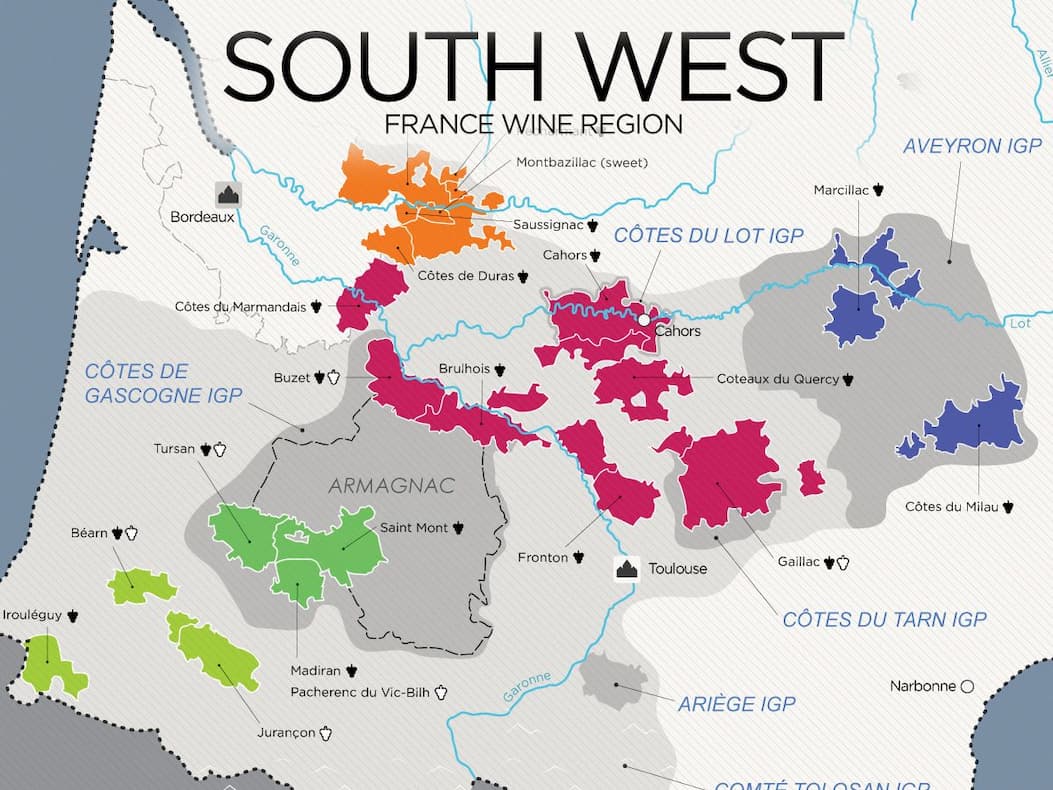South-West France: France’s Hidden Gem
Tucked between Bordeaux, the Pyrenees, and the Atlantic coast, South-West France is one of the country’s most diverse and underrated wine regions. It’s a land of deep history and vibrant local character, where ancient varieties and small family producers thrive across a patchwork of appellations. Drawing influences from Bordeaux, Spain, and the rugged hills of the Massif Central, this region offers a wide range of styles—many of which remain refreshingly off the radar.
In Bergerac and the Dordogne Valley, Bordeaux varieties take centre stage in reds, whites, and beautifully botrytised sweet wines like Monbazillac. Further south, the powerful, dark Malbecs of Cahors and the structured Tannat-based wines of Madiran speak of warmth and intensity, balanced by generations of winemaking know-how. In nearby Jurançon, high-altitude vineyards yield aromatic whites with striking freshness and complexity, especially from the local Petit and Gros Manseng grapes.
One of France’s oldest winegrowing areas, Gaillac is a true original—home to ancient grapes like Len de l’El and Mauzac, as well as traditional sparkling wines made using the méthode ancestrale. Marcillac is equally distinctive, known for its lively reds made almost entirely from the native Fer grape. Across the southwest, you’ll also find exciting wines from Irouléguy in Basque country, and more easy-drinking blends from appellations like Fronton, Buzet, and Côtes de Duras.
What unites these areas is a sense of independence and authenticity—wines made with soul, shaped by place, and often far better value than their more famous neighbours. South-West France remains one of the country’s most rewarding regions for curious drinkers ready to explore.
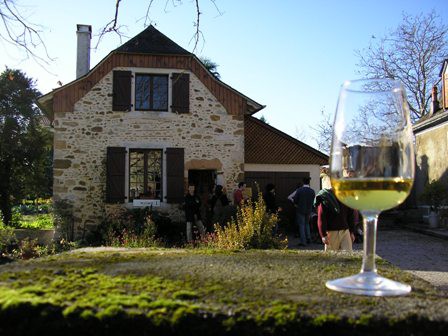
Camin Larredya | Jurançon
Jurançon, near the city of Pau, is special for many reasons. It’s one of the most beautiful vineyard regions in France, with steep slopes, lush landscapes, and the snow-capped Pyrenees often visible in the background. This pocket-sized appellation spans just 1,000 hectares and is home to around 100 producers. Historically celebrated for its late-harvest sweet wines—or moelleux—Jurançon also produces exceptional dry whites, formally recognised under a separate AOC in 1975 as Jurançon Sec.
While Didier Dagueneau helped shine a light on the region, today it’s winemakers like Jean-Marc Grussaute of Camin Larredya who are leading the charge and gaining admiration, particularly among France’s sommelier community.
Jean-Marc runs the estate with his mother, tending to their nine hectares of vineyards—land that’s been in the family since the early 1900s. The majority of the vines were planted by Jean-Marc’s father in the 1970s. Organic farming has been in place since 2007 (certified in 2010), with a move to biodynamics in 2016. The vineyard is planted to 65% Petit Manseng, 27% Gros Manseng, and small portions of Petit Courbu and Camaralet. Sitting at 300 metres elevation, the soils are composed of silica-clay over puddingstone subsoils.
Every action on this hill is intentional. Jean-Marc’s philosophy is rooted in precision and care—working the soils, planting cereals or pulses between rows, and using natural compost when needed. His goal is for the vines to dig deep and express the full character of the terroir.
The wines begin with gentle skin contact, followed by spontaneous fermentation with indigenous yeasts. Fermentation and ageing occur on lees in a mix of barrels and foudres, with bâtonnage to keep the lees in suspension. The wines are then left to rest and evolve in the cool cellars, gaining texture and complexity.
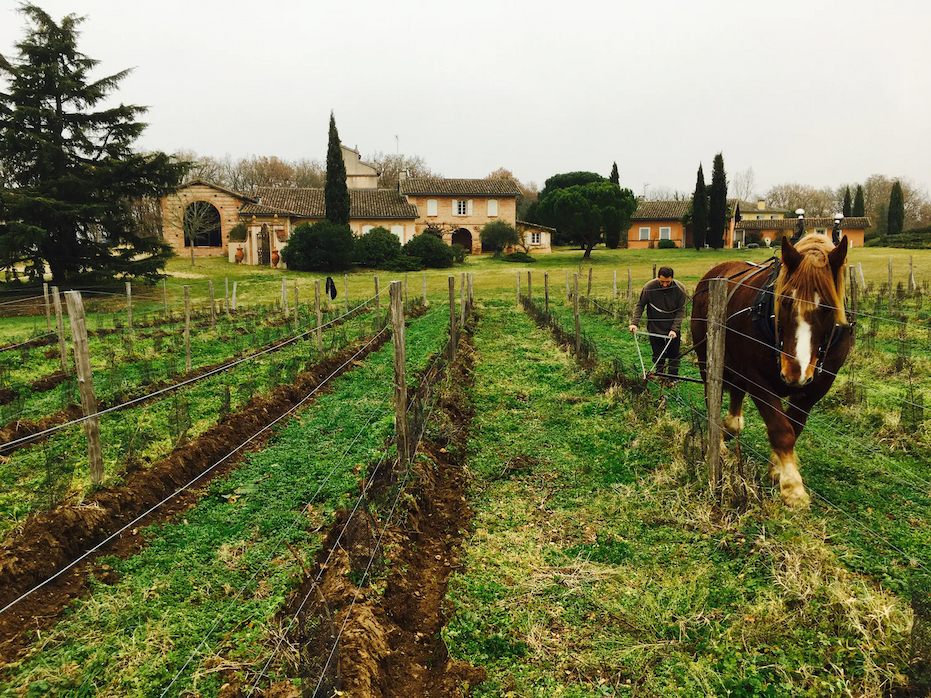
La Colombière | Fronton
Just 30 minutes north of Toulouse, some of France’s rarest vines are being painstakingly revived by husband-and-wife team Diane and Philippe Cauvin. The pair is living their dream, crafting wines from a regional variety—Négrette, native to their area of Fronton.
Diane took the reins of the family estate after studying viticulture and completing a tour de force through French vineyards, including Burgundy. The first—and perhaps most significant—change was converting Château La Colombière to biodynamic farming in 2006, a radical shift for a vineyard cultivated the same way since the 15th century.
Add to this hand-picking and sorting, and you have the foundation for something truly expressive. The terroir is composed mainly of gravel and sandy alluvial soils, part of the Tarn River terraces. Alongside 25-year-old vines, some exceptional 70-year-old Négrette vines continue to thrive.
All biodynamic preparations are made and dynamised on site, with a focus on activating soil life through cover crops, ploughing, and natural weed growth. The Cauvins favour a ‘hands-off’ winemaking style, believing their best work happens in the vineyard. In the cellar, gravity is used to gently move the fruit. Grapes are hand-harvested, hand-sorted, then partially de-stemmed and lightly crushed before fermenting in cement vats.
Diane and Philippe may say it’s not rocket science—but we think what they do is pretty special. And we’d happily drink these fresh, floral wines morning, noon, and night (responsibly, of course).
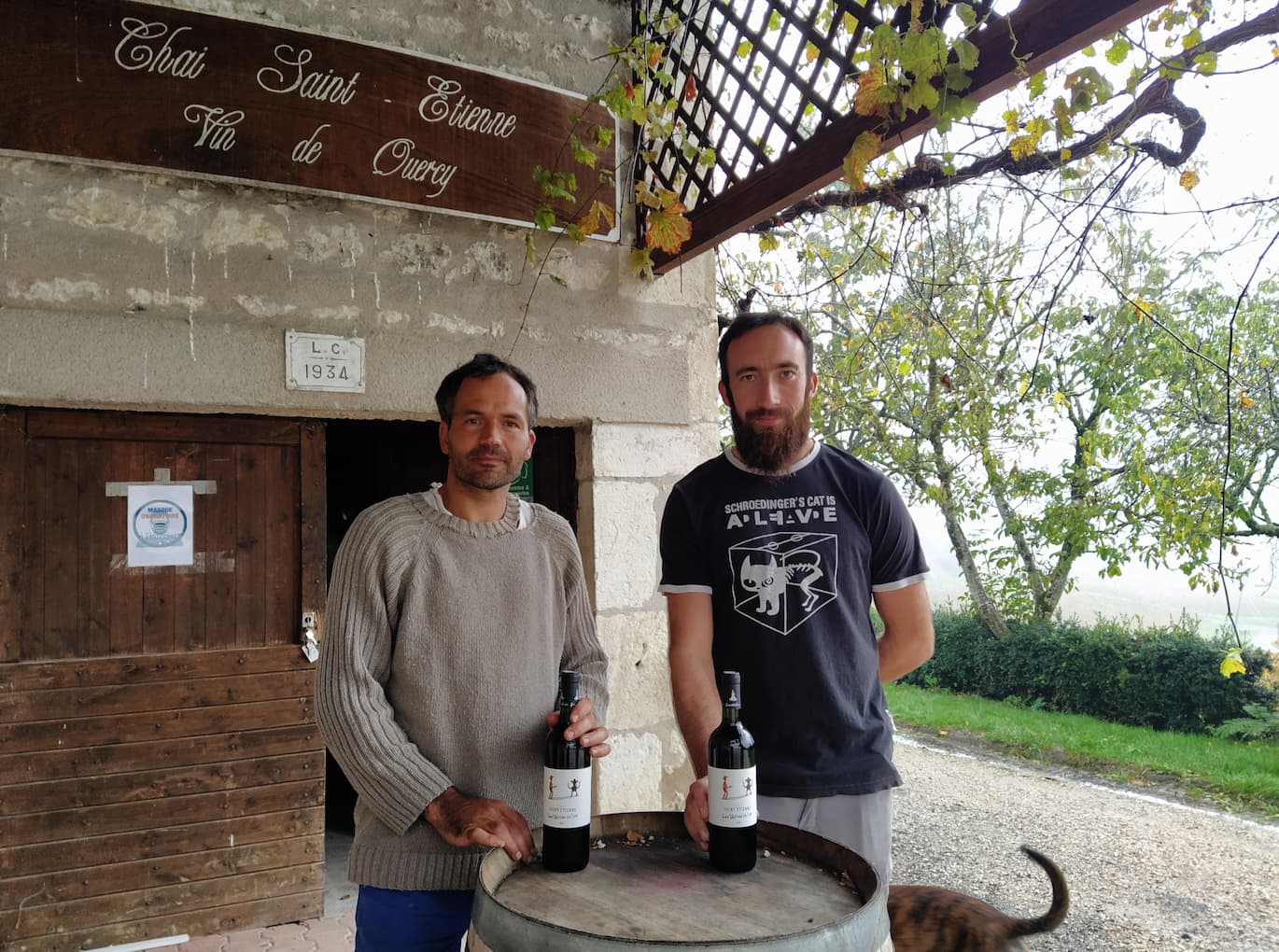
Domaine Chai Saint Etienne | Quercy
Domaine Chai Saint Etienne is the heart and original inspiration behind Mosaique Wines—so forgive a little bias in this blurb. Located just 20 minutes from Cahors, the estate has been in the Gisbert family since 1778, with generations of vignerons focused on making wines to be shared among good company (preferably over long lunches). The vineyard is nestled among sunflower fields and fruit orchards, with vines encircling the church of Saint Etienne—its bell tower keeping watch over the grapes.
The guiding philosophy is simple: make the best wine possible using sustainable practices passed down through generations. The result is balanced, elegant red blends from Cabernet Franc, Merlot, and Côt (Malbec), as well as a deliciously vibrant rosé made from Cabernet Franc and Gamay. Camille and son Roger knew they were on the right path when, during vineyard work, they discovered ancient Roman amphora fragments—proof that wine was made on this site centuries ago. These relics, along with the estate’s mosaics, remain a constant reminder of timeless, honest winemaking.
Coteaux du Quercy AOC is one of France’s smallest wine regions, with just 400 hectares and fewer than 20 growers. Once home to over 50,000 hectares of vines, the region was nearly wiped out by phylloxera. Roger Gisbert and a small group of courageous growers revived it from scratch. With high-draining slopes of white clay and limestone, the site naturally favoured Cabernet Franc, Merlot, and Côt. The family also cultivates rare plantings of Jurançon Noir—a nearly forgotten native variety of South-West France.
Today, Benoît and Mathieu continue the family’s sustainable approach, with the vineyards shaped by their protected southeast-facing amphitheatre location. Pruning follows the lunar calendar, just as their ancestors did. Grassy cover crops grow in every second row to reduce vigour and yield, encouraging vine competition and concentration. The result? Distinct, soulful wines that honour history while looking to the future.
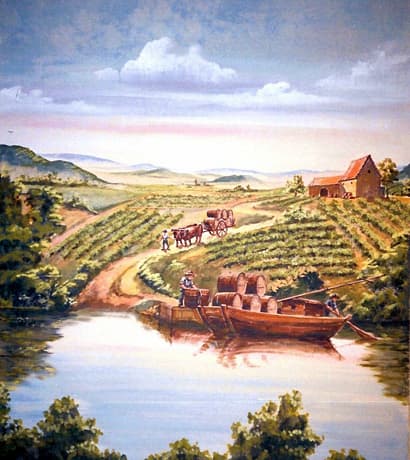
Clos de Gamot | Cahors
Malbec—the grape that built Cahors—vinified by the region’s most iconic winemaking family. It’s the stuff of South-West dreams. The wines of Clos de Gamot are the humble benchmark for Cahors Malbec, with the Jouffreau family passing down their winemaking traditions from father to son since 1610.
Despite setbacks over the centuries, the Jouffreaus have remained true to their vines—never chasing trends, never abandoning their native varieties, and bottling wines even when many others in the region gave up. Their philosophy is simple: be good farmers, give things time, observe nature, and act with respect. It’s an approach that has seen vines dating back to 1885 still producing intensely characterful fruit.
The estate is situated on the second and third terraces of the Lot River, where soils are composed of pebbles, gravel, and quartz mixed with alluvium. No herbicides are used, meaning the workload in the vineyard is immense. In the cellar, grapes are sorted upon arrival, and each plot is vinified separately. Gentle pump-overs help maintain structure and harmony. Ageing takes place in seasoned oak—some foudres are 40 years old and range from 70 to 100 hL—for 18 to 24 months.
Jean Jouffreau’s daughters and his son-in-law Yves Hermann now carry on the family legacy, with Yves’ son recently joining the estate. Their dedication remains firm: allow the wines to rest and mature in bottle, revealing their story over time. “A wine, like a person,” Yves says, “should have a personal story to tell.”
Clos de Gamot’s wines are vibrant and soulful—violet, dark fruits, fresh and pure, with crunchy tannins and skillful oak use. In exceptional years, the Cuvée des Vignes Centenaires is crafted from 100+ year-old vines, offering notes of plum, black fruits, leather, and depth that induces goosebumps. The wines age beautifully—vintages like 1978, 1988, and 1990 are living proof.
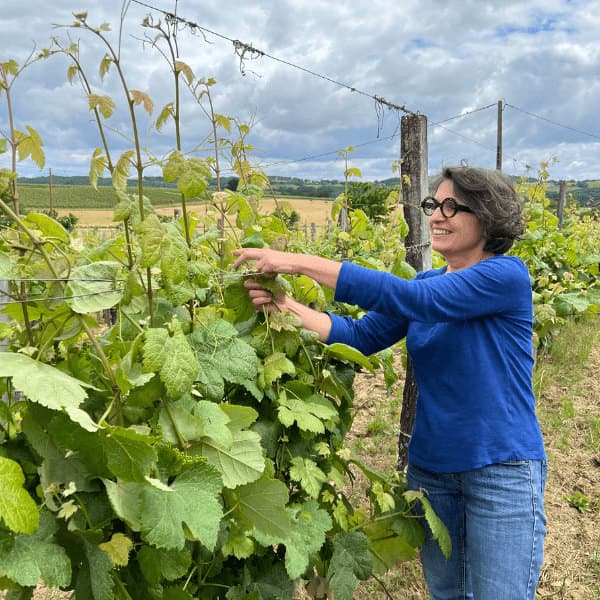
Domaine Labranche Laffont | Madiran
Domaine Labranche Laffont is living proof that a tannic beast can be tamed by a woman’s touch. The wines of Madiran are often seen as bold and brooding, with Tannat known for its powerful grip and weight. Enter Christine Dupuy—a game-changer in the region—who has made it her mission to challenge the Tannat stereotype. She took over the family domaine in 1993, becoming the youngest female winemaker in Madiran at the time.
Located in the small commune of Maumusson-Laguian, the vineyard has expanded under her care from 6 to 20 hectares, all organically farmed. The estate is planted with native varieties including Tannat, Gros Manseng, and Petit Manseng, as well as Cabernet Franc and Cabernet Sauvignon. It’s also home to a rare treasure—pre-phylloxera Tannat vines dating back to the 1870s—of which Christine is one of only two custodians in the region. These gnarly old vines are the real deal.
The vines benefit from gentle, south- to southeast-facing slopes, with silty clay and limestone soils providing a strong foundation. Certified by Ecocert, the vineyard work is mostly done by hand. Soils are ploughed in spring and autumn, compost is added in the cooler months, and grass is allowed to grow between every second row. Grapes are hand-harvested at peak ripeness, then sorted and destemmed with care.
Fermentation takes place in temperature-controlled vats, with gentle pump-overs for the reds. Malolactic conversion and ageing occur in seasoned oak barrels, with minimal sulphur additions and light filtration before bottling.
The resulting Madiran is a surprise—deep and complex, with notes of spice, leather, dark chocolate, and ripe black fruit. It shows the hallmark structure of Tannat, but with elegance, charm, and polished tannins. Much like Christine herself, the wines are approachable, honest, and quietly impressive.
